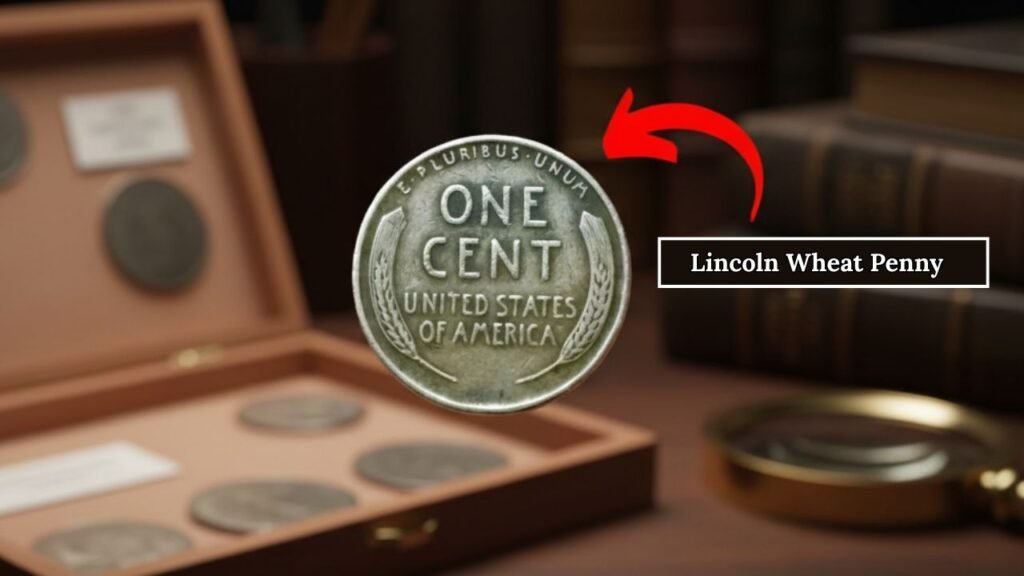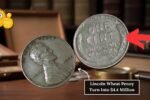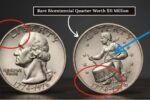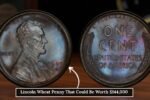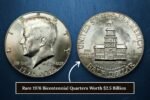The Lincoln Wheat Penny is more than just a coin—it’s a miniature emblem of American history that you can carry in your pocket. Minted from 1909 to 1958, this iconic penny reflects the nation’s heritage through its design, historical significance, and lasting appeal. In this guide, we’ll uncover the story of the Lincoln Wheat Penny, explore its notable features, and explain why collectors and history enthusiasts continue to treasure it.
What is the Lincoln Wheat Penny?
The Lincoln Wheat Penny is a one-cent coin introduced by the United States Mint in 1909 to mark the 100th anniversary of Abraham Lincoln’s birth. It was groundbreaking as the first U.S. coin to feature a real person, Abraham Lincoln, rather than a symbolic figure. Designed by Victor David Brenner, the coin’s name comes from the wheat stalks on its reverse side, symbolizing America’s agricultural roots.
Why Was the Lincoln Wheat Penny Created?
The early 20th century saw a desire to honor Abraham Lincoln, one of America’s most revered presidents. Placing Lincoln’s image on a coin was initially controversial, with some critics claiming it resembled European monarchies. However, President Theodore Roosevelt supported the idea, and Brenner’s design ultimately received approval, creating a coin that would become an enduring symbol of American pride.
Design of the Lincoln Wheat Penny
The Lincoln Wheat Penny stands out for its meaningful and clean design.
Obverse (Front) Design
- Lincoln’s Portrait: Features a detailed bust of Abraham Lincoln facing right, inspired by a photograph, capturing his strong and contemplative expression.
- Inscriptions: “IN GOD WE TRUST” sits above Lincoln’s head, “LIBERTY” to the left, and the year of minting to the right.
Reverse (Back) Design
- Wheat Stalks: Two wheat stalks frame the edges, giving the coin its nickname, the “Wheat Penny.”
- Inscriptions: “ONE CENT” is centered, with “UNITED STATES OF AMERICA” below and “E PLURIBUS UNUM” above.
Key Design Variations
- 1909 VDB Controversy: The first pennies included Brenner’s initials (VDB) on the reverse. Due to criticism, they were removed later in 1909, making these early coins highly collectible.
- Material Changes: In 1943, pennies were made of steel coated with zinc because copper was needed for World War II. Rare 1943 copper pennies exist and are extremely valuable.
- Bronze Returns: In 1944, most pennies returned to bronze, though a few steel versions were minted, creating collector’s items.
Historical Significance
The Lincoln Wheat Penny reflects America’s history during transformative times:
- Tribute to Lincoln: Honors the 16th U.S. President, known for preserving the Union and ending slavery.
- Economic and Social Context: Circulated during the Great Depression and two World Wars, serving as a symbol of resilience.
- Coin Design Shift: Marked a transition from symbolic figures like Lady Liberty to real historical personalities on U.S. coins.
Why Collectors Love the Lincoln Wheat Penny
Collectors prize the Lincoln Wheat Penny for its history, rarity, and variety:
- Rarity and Value:
- 1909-S VDB: Only 484,000 minted.
- 1943 Copper Penny: Fewer than 20 known.
- 1955 Double Die: A famous minting error.
- Accessibility: Many Wheat Pennies are affordable for beginners, available in pocket change or coin shops.
- Nostalgia: Evokes memories of past generations, adding sentimental value.
Key Lincoln Wheat Penny Facts
| Aspect | Details |
|---|---|
| Years Minted | 1909–1958 |
| Designer | Victor David Brenner |
| Material | 1909–1942, 1944–1958: Bronze; 1943: Steel with zinc coating (rare copper errors exist) |
| Key Varieties | 1909-S VDB, 1943 Copper, 1955 Double Die |
| Mints | Philadelphia (no mint mark), Denver (D), San Francisco (S) |
| Value Range | Common: $0.10–$5; Rare: $1,000–$2,000,000+ |
| Current Status | Replaced by Lincoln Memorial Penny in 1959 |
How to Start Collecting Lincoln Wheat Pennies
Where to Find Them:
- Pocket change (rare today)
- Coin shops, both local and online
- Coin shows for rare varieties
- Online marketplaces like eBay or Heritage Auctions (watch out for fakes)
Tips for Collecting:
- Check the coin’s condition (Mint State or Uncirculated coins are more valuable)
- Focus on rare years like 1909-S VDB or 1943 Copper
- Use a guidebook such as the “Red Book” for details and values
- Store coins in protective holders to prevent damage
How to Spot Valuable Pennies:
- Look for mint marks (“S” for San Francisco, “D” for Denver)
- Watch for errors like double dies or unusual materials
- Higher-grade, shiny coins are worth more
Legacy of the Lincoln Wheat Penny
Though replaced in 1959 by the Lincoln Memorial Penny, the Wheat Penny remains a symbol of American ingenuity and resilience. For collectors, it provides a tangible link to the past; for history enthusiasts, it’s a reminder of Lincoln’s lasting influence. Its design also paved the way for future U.S. coins, making it a pivotal piece of numismatic history.
Conclusion
The Lincoln Wheat Penny is far more than a simple coin—it’s a window into America’s past. From celebrating Abraham Lincoln to reflecting historical eras of economic hardship and wartime resilience, the Wheat Penny tells a story of pride, perseverance, and change. Whether you’re a seasoned collector or simply curious, owning a Lincoln Wheat Penny offers a tangible connection to history and the potential to discover rare treasures.
FAQs
What years were the Lincoln Wheat Pennies minted?
1909 to 1958.
Who designed the Lincoln Wheat Penny?
Victor David Brenner.
What makes a Lincoln Wheat Penny valuable?
Rarity, condition, key dates, and mint errors.
How can beginners start collecting Wheat Pennies?
Look for coins in pocket change, visit coin shops, and use a guidebook for reference.
Why is the 1943 Copper Penny so rare?
Most 1943 pennies were steel; a few copper coins were mistakenly minted, making them extremely rare.
